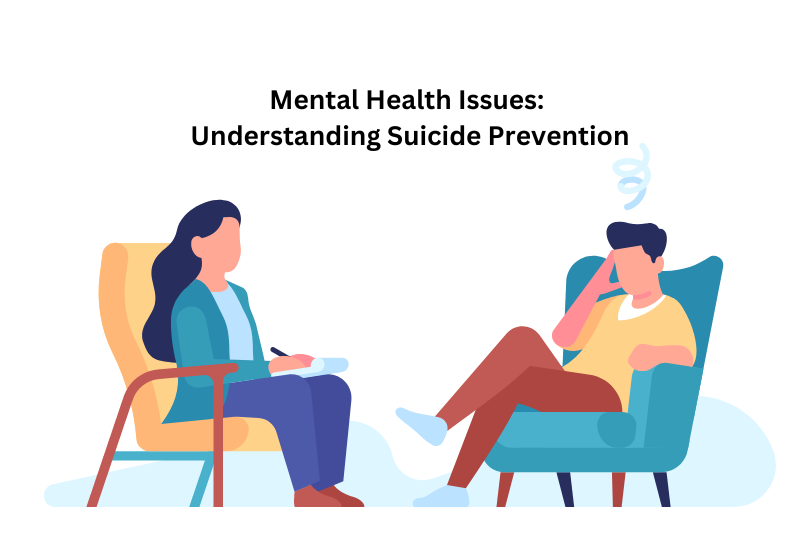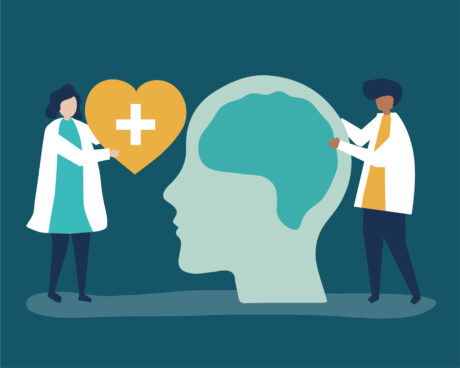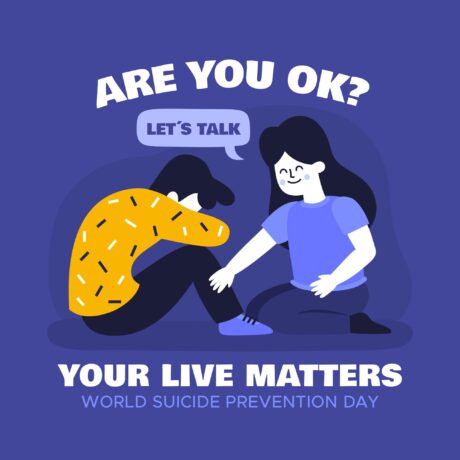
Mental Health Issues: Understanding Suicide Prevention
Have you ever felt like life is too hard to continue? It’s not an unusual feeling, and for some, it can lead to thoughts of suicide. Mental health is a topic of great concern today, with suicide being one of the major outcomes of untreated or poorly managed mental health issues.
Understanding Mental Health
The Concept of Mental Health
Mental health is our emotional, psychological, and social well-being. It affects how we think, feel, and act. It also helps determine how we handle stress, relate to others, and make choices. Good mental health can lead to a good life, while mental health issues can often lead to a troubled life.
Common Mental Health Issues
Common mental health issues include depression, anxiety, bipolar disorder, and schizophrenia. But it’s not just diagnosed conditions that are a concern. Even the day-to-day stress of life can negatively impact mental health if not managed appropriately.

The Silent Epidemic: Suicide
What is Suicide
Suicide is the act of intentionally causing one’s own death. It’s a desperate measure that individuals take who wrongly believe their situation is hopeless.
The Impact of Suicide
The impact of suicide goes far beyond the individual. It affects families, communities, and society as a whole. According to the World Health Organization, more than 700,000 people die due to suicide every year. This is a huge number, and it’s growing more and more as we move into the future. If the situation is not controlled properly, this can be the biggest concern in the time to come.
Why is suicide a concern in mental health?
Suicidal thoughts, if left untreated, can develop into self-harm or suicide attempts. This is why suicide is a major concern in mental health. Suicide rates have been increasing over the years, mainly because of bad mental health and different mental health issues. Addressing this issue through prevention strategies has become more important than ever.
What are the types of suicide?
According to the famous French sociologist Émile Durkheim, there are four types of suicide:
- Egoistic suicide
- Altruistic suicide
- Anomic suicide
- Fatalistic suicide
Egoistic suicide
Egoistic suicide is said to be caused by a lack of social interaction. Individuals who are social outcasts and regard themselves as alone or outsiders mainly do it. These people struggle to establish their own position in society and have difficulty adjusting to groups. They view suicide as a way to escape loneliness.
Altruistic suicide
Altruistic suicide occurs when social involvement is too much. Individuals are so completely integrated into the group that they are willing to give up their individual lives to fulfil a group commitment. They commit suicide for the benefit of the group as a whole or for a cause in which the group believes.
Anomic suicide
A lack of social restraint causes anomic suicide. It occurs mainly when people are stressed and frustrated. Anomic suicide is caused by rapid and unexpected changes in circumstances. For example, when someone suffers severe financial loss, the disappointment and stress they experience may motivate them to commit suicide as a way of escaping reality.
Fatalistic suicide
Fatalistic suicide occurs when people are kept under strict control. These people are subjected to harsh regulations or have unrealistic demands imposed on them, robbing them of their sense of self or originality. Slavery and persecution are examples of fatalistic suicide, in which individuals believe they are fated to be in such situations and choose death as the only way out. Celebrities in South Korea are subject to stringent laws. In 2017, celebrity Kim Jonghyun committed suicide due to exhaustion from keeping up with society’s standards and laws.
Common Suicide Methods
There are 3 methods which are commonly used worldwide for suicide. These are
- hanging
- poisoning
- firearms
Some suicides are impulse decisions which can be prevented by removing the means.

Mental Health Issues
Mental health issues often drive people towards suicide. These issues can be caused by a combination of factors.
Factors that contribute to the development of mental illness
Some of the common factors that contribute to the development of mental illnesses include:
- Genetics
- Environmental factors
- Life experiences
- Upbringing
- Chemical imbalances
Common mental illnesses that are linked to suicide
Some of the common mental illnesses that are linked to suicide are:
- Depression
- Substance abuse
- Bipolar disorder
- Post-traumatic stress disorder (PTSD)
- Schizophrenia
If you want to learn more about mental health issues and how to recover from them, check out our complete Positive Mental Health course.
Warning signs and risk factors
Warning signs and risk factors associated with suicide include:
- A history of depression or other mental illnesses
- A previous suicide attempt
- Relationship difficulties
- Substance abuse
- Financial difficulties
- Lack of social support
Demographic Analysis on Suicide
Age and gender trends among suicide victims and socioeconomic status are important to analyse in order to understand suicidal behaviours fully.
Age and gender trends among suicide victims
If we compare to females, the suicide rate among males is a lot higher. In fact the suicide rate for men is four times the rate for women. On the other hand, women attempt suicide at a higher rate than men. Among age ranges, adolescents and elderly individuals are found to be at higher risk for suicide.
Socio-economic status of suicide victims
Low-income individuals, single parents, and unemployed persons are more likely to experience suicidal thoughts than individuals of higher socio-economic status.
Approaches and Strategies to Suicide Prevention
There are various approaches and strategies for suicide prevention. We have listed some of them here:
Crisis intervention
The immediate response to a suicidal individual or group is known as Crisis intervention. This involves assessment, counselling and referrals if necessary.
Talk therapies
Talk therapy involves working with a mental health professional to explore the underlying reasons or factors that may have led to suicidal thoughts. This is an effective way to get rid of suicidal thoughts and many other mental health issues.
Medications for suicide prevention
Medications such as antidepressants and anti-anxiety drugs are prescribed to individuals experiencing suicidal thoughts. Long-term use of these medications can help in solving many mental health issues.
Involvement of family members and caregivers
The involvement of family members and caregivers in the treatment plan of a suicidal individual is also crucial in preventing them from engaging in suicidal behaviours. Proper Involvement of family members can also improve e a lot of mental health issues in a person.

Coping Mechanisms for suicide prevention
Coping mechanisms are necessary for suicide prevention. These include:
- Self-care techniques
- Distraction techniques and alternatives
- Mindfulness and meditation
Check out this Suicide Prevention Mental Health and Self-Harm Awareness Training from Training Express to learn more in detail about suicide prevention methods.
The Role of Culture and Society in Mental Illness
Cultural background and societal factors play a significant role in how we view and address mental health issues.
The stigma surrounding mental health issues in different cultures
Different cultural backgrounds have varying views concerning mental health issues and illnesses, which may affect how individuals view and seek treatment.
The impact of societal factors on mental health
Societal factors such as poverty, discrimination, and inequality can also impact mental health negatively.
Addressing Cultural and Societal Components in suicide prevention
Preventive measures in suicide prevention involve addressing harmful societal narratives and cultural taboos around mental health issues.
Tackling Mental Health Issues in the Workplace
Mental health problems such as depression or anxiety can negatively affect job performance and productivity in the workplace. Effective strategies should be put in place to maintain a workplace free from mental health issues. We have selected this Workplace Mental Health First Aid and Advocacy Training course from studyhub for you. If you want to learn more and minimise the impact of Mental Health Issues in the Workplace, join the course!
Promoting mental health and well-being at work
Employers can create positive work cultures that foster employee mental health and well-being.
Creating supportive and inclusive workplace cultures
Supportive and inclusive workplace cultures also ensure that employees are supported and free from discrimination based on their mental health status. This is an effective strategy for solving many mental health issues.
Whistleblowing policies for mental health concerns
Whistleblowing policies can be implemented to protect employees who speak up about mental health concerns.

The Role of Technology in Suicide Prevention
Technology plays a crucial role in suicide prevention by providing accessible mental health services and resources.
Internet-based therapies and online counselling for suicide prevention
Individuals who may not have the physical or financial capacity to attend in-person sessions can access Internet-based therapies and online counselling services.
Smartphone apps for suicide prevention and mental health promotion
Various smartphone apps provide users with tips and resources for suicide prevention and mental health promotion. Suicide Safe is one such Mobile app. Many of these apps are also free to use and give great value to a person with mental health issues.
Social media and online discussions on mental health issues and awareness
Social media and online platforms can raise awareness of mental health issues, removing the stigmas associated with them. There are many podcasts and interviews on mental health issues. You can check out Jordan B Peterson’s youtube channel for interviews and online discussions on mental health. He is a Psychologist and an amazing person who mostly talks about Men’s mental health.
Global Trends and Statistical Overview
Suicide impacts millions of individuals globally. Analysing global trends and statistics can help identify risk factors and trends.
Global suicide rates and trends
Suicide is a growing global issue with increased rates over the years.
Comparison of national suicide rates
A comparison of national suicide rates also reveals varying suicide prevention strategies and policies among different countries.
Discussion of global policies and initiatives
Global policies and initiatives are necessary to address the issue of suicide and implement prevention strategies globally.
Coping Mechanisms for Family and Friends
Suicide doesn’t just affect the person who is experiencing suicidal thoughts but also their family and friends. Let’s look at some coping Mechanisms for the Family and Friends of the suicide victim.
Support groups for suicide loss survivors
Support groups offer a community of people who have experienced suicide loss to share their experiences and gain support.
How to support someone who is experiencing suicidal thoughts
Family and friends can offer vital support to an individual experiencing suicidal thoughts. It’s much-needed support that the person with suicidal thoughts needs but won’t always tell you.
Self-care for family and friends of suicide victims
Family and friends of suicide victims also need to take care of their mental health after experiencing loss. Here’s a Bereavement and Grief Counselling course if you want to learn more about the topic.

Trauma and Suicide
Trauma can negatively impact an individual’s mental health and lead to suicidal thoughts. It can also develop many new mental health issues in a person.
PTSD and suicide
PTSD can lead to suicidal thoughts and ideation if left untreated. This Post-Traumatic Stress Disorder (PTSD) Counselling course will teach you how to treat PTSD. So if you want to learn more about PTSD, suicide, and mental health issues, enrol in the course.
Coping Mechanisms and Treatment for trauma survivors
Seeking professional help, adequate rest, and self-care is crucial in the care of trauma survivors.
Discussion on the links between trauma and suicide
We should discuss the links between trauma and suicide to implement better suicide prevention strategies.
The road ahead towards Effective suicide prevention
Addressing suicide requires ongoing dialogue, efforts, global policies, and preventive measures. Let’s promote mental health awareness and create a safer and more compassionate society. We all can work together to make the world a better living place for everyone.
Conclusion
Suicide is a pressing issue that requires attention, awareness, and preventive measures. By understanding mental health issues and suicide prevention strategies, we can help prevent suicides. We can also support individuals who may be experiencing suicidal thoughts. This will be helpful for both our soul and society.
FAQs
Is suicide preventable?
Yes, suicide is preventable through early detection, intervention, effective counselling, and support.
Are there any specific risk factors that one should watch out for?
Some of the key risk factors of suicide include a history of mental illness, previous suicide attempts, relationship problems, and substance abuse.
What should I do if a friend or family member expresses suicidal thoughts?
When someone is experiencing suicidal thoughts offering support, listening, and encouraging them to seek professional help is crucial.
Were there any notable movements or changes in suicide prevention recently?
International efforts have been ongoing towards suicide prevention, including the WHO Mental Health Action Plan.
What can individuals and communities do to address mental health and suicide prevention?
Individuals and communities can create safe spaces for dialogue, promote mental health awareness and intervention, and advocate for policies that support individual’s mental health and well-being.
- All Courses
- IT & Software317
- Management263
- Teaching and Education229
- Business219
- Health and Fitness216
- Health & Safety155
- Engineering & Technology141
- Quality Licence Scheme136
- Health and Social Care128
- Healthcare123
- Accounting & Finance111
- Psychology96
- Lifestyle94
- Employability91
- Marketing75
- Office Productivity59
- Animal Care55
- Design and Photography48
- Beauty & Makeup43
- Design39
- Accounting & Bookkeeping32
- Web Development11
- Child Care8
- Construction7
- Agriculture5
- Environment1
Awarded By





0 responses on "Mental Health Issues: Understand Suicide Prevention"